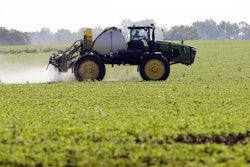WEST LAFAYETTE, Ind. (AP) — A Purdue Extension plant pathologist says the drought and extreme heat this summer have created conditions prime for a condition known as Aspergillus ear rot to develop in corn.
Kiersten Wise says there is no cornfield without some potential for developing the fungus that infects corn ears through the silks or wounds and produces a toxic carcinogen that can cause health problems for livestock that consume contaminated corn.
She says fields most at risk are those in which corn was planted in late March to early April, because of the high temperatures and drought stress that occurred while corn was pollinating.
She says farmers should scour their fields to see if there are signs of it. The disease can be identified by its olive green, moldy growth on corn ears.






















